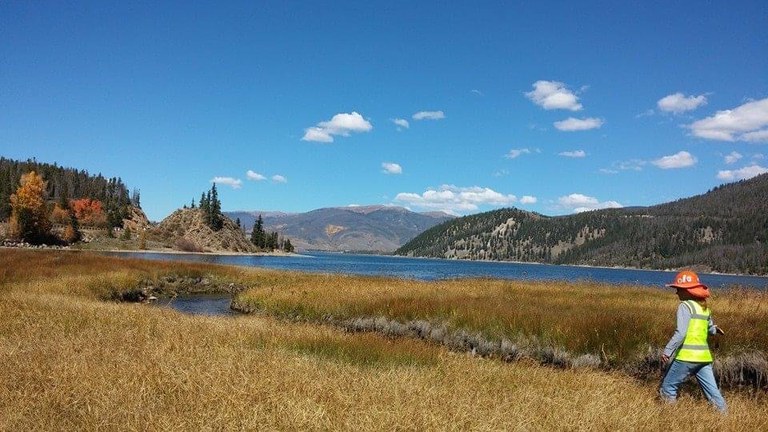Wetlands
Mission
The mission of the Wetland Program is to provide technical assistance for transportation project development and construction with the goal of an overall benefit to aquatic ecosystems in Colorado.
Please see below for what's new and upcoming in the CDOT wetland world. Use the Quick Links on the left to navigate to more information
What's New
House Bill (HB) 24-1379 directs the Water Quality Control Division to implement a dredge and fill authorization program and the Water Quality Control Commission to promulgate rules for individual permitting and mitigation by Dec. 31, 2025.
As of Jan. 1, 2025, any person seeking authorization to discharge dredged or fill material into state waters that are not subject to federal jurisdiction shall apply for a temporary authorization from the division. Temporary authorizations recognize nationwide (NWP) and regional general permits (RGP) issued by the US Army Corps of Engineers as valid authorizations to discharge dredged or fill material into state waters.
What's Not New But Important
Programmatic Wetland Finding
CDOT and FHWA revised the Memorandum of Agreement between the two agencies regarding the programmatic approval of certain wetland findings. The most notable change to the wetland finding reporting process is the addition of a Programmatic Wetland Finding template that is required for the preparation of all programmatic wetland findings. The programmatic wetland finding shall be applied for all federal-aid transportation projects that meet all 7 criteria below:
- The project is being prepared as a categorically-excluded minor project as defined in 23 C.F.R. 771.117.
- Project activities will involve at least 500 ft2 of permanent wetland impacts or 1,000 ft2 of combined temporary and permanent wetland impacts. Projects with wetland impacts less than above do not require a wetland finding.
- Less than one acre of wetland will be impacted either temporarily, permanently, or in a combination of the two.
- All practicable alternatives to avoid and minimize impacts have been addressed and documented in the wetland finding, as specified by Executive Order 11990 and the FHWA Technical Advisory T6640.8A .
- The wetland compensatory mitigation ratio is no less than 1:1, regardless of jurisdictional status, unless the mitigation plan will replace functions with a lower mitigation ratio.
- The project will not impact a Gold Medal Trout Stream, a designated National Wild and Scenic River, or other areas of special ecological concern (i.e. fen wetland, fish spawning ground, etc.).
- The project does not require a Clean Water Act section 404 permit, or the project is authorized under a section 404 nationwide permit.
Non-Programmatic Wetland Finding
When any of the above criteria cannot be met, the project does not fall into the category of a programmatic wetland finding. In this case CDOT or its representative will prepare a non-programmatic wetland finding. CDOT has no template for non-programmatic wetland findings. The level of detail expected in a non-programmatic wetland finding is commensurate with the impact severity and mitigation complexity.

